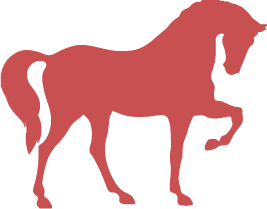EQUINE: SPECIAL OFFERS FROM THE XMAS CATALOGUE
Here are our leading offers for horse from the Xmas Catalogue. Prices may vary due to freight. Roundworm tapeworm and bot treatment…
Free Delivery when you spend $49 or more. (Weight Limits Apply – view more)
 Dog
Dog

Shop Tuckers great range of dog food, health care & wellness products today. Delivered or Click & Collect.
 Cat
Cat

Tuckers has a great range of cat food, health care & litter products for your beloved cat. Shop now.
 Horse
Horse

Tuckers carry a huge range of food, supplements, health care, hoof care and grooming accessories. Shop now.
 Chook/Bird
Chook/Bird

Tuckers range of food, accessories & health care products will keep your chooks & birds happy and healthy.
 Small Animal
Small Animal

Shop food and health care products for your little mates @ Tuckers. Delivered or Click & Collect.
 Farm/Garden
Farm/Garden

Tuckers carry a wide range of sheep & cattle products, plus everything you’ll need around the farm or garden.
 Dog
Dog

Shop Tuckers great range of dog food, health care & wellness products today. Delivered or Click & Collect.
 Cat
Cat

Tuckers has a great range of cat food, health care & litter products for your beloved cat. Shop now.
 Horse
Horse

Tuckers carry a huge range of food, supplements, health care, hoof care and grooming accessories. Shop now.
 Chook/Bird
Chook/Bird

Tuckers range of food, accessories & health care products will keep your chooks & birds happy and healthy.
 Small Animal
Small Animal

Shop food and health care products for your little mates @ Tuckers. Delivered or Click & Collect.
 Farm/Garden
Farm/Garden

Tuckers carry a wide range of sheep & cattle products, plus everything you’ll need around the farm or garden.

Courtesy of CopRice.
The stomach… all horses have one and, in the perfect world, it’s a super useful organ… not a source of pain or angst.
The stomach is essentially the first stop in the digestive tract – it holds ingesta (aka the food your horse eats) and kicks off the initial stages of digestion by secreting enzymes plus some fairly heavy-duty acid. In the perfect world, the mighty powers of the equine stomach are used only for good.
But if you’re reading this article, you probably know that your horse – and their stomach – does not live in the perfect world. Here in the real world, problems such as gastric ulcers are sadly, often a painful reality.
So, let’s dive into all things stomach… learn what causes gastric ulcers and more importantly, what you can do to help prevent them!
First up, what are we dealing with?
Your horse’s stomach is made up of two distinct regions – the squamous (or non-glandular) region at the top and the glandular region at the bottom.
The squamous region is delicate and very sensitive to gastric acid, whereas the glandular region is more robust.
The next thing to understand is that horses evolved to graze pretty much all day long and this means 3 things…
When your horse is exercised on an empty stomach, their stomach contains plenty of acid, but no gut fill to act as a physical barrier against acid splashing around, and not much saliva to buffer (or neutralise) gastric acid pH either.
That means the highly acidic gastric acid can easily splash or be squeezed up into the delicate upper squamous sections of the stomach and (if this happens repeatedly) it’s the perfect storm for creating gastric ulcers.
The technical term for ulcers in the squamous part of the stomach is Equine Squamous Gastric Disease (ESGD). (Note that ulcers can also form in the lower, glandular region of the stomach too, but we won’t cover that in this article.)
Some horses outwardly show the pain they feel from their ulcers and might struggle to maintain weight, perform well or have a reduced appetite. BUT there are plenty of horses with gastric ulcers who suffer without showing any outward signs.
Hence, the only way to really know if your horse has gastric ulcers – and where or how bad they are – is by gastroscope. Gastroscopy is where your vet uses a special instrument (essentially a long tube with a camera on the end) to check the stomach for ulcers. If you suspect your horse has ulcers, consult your vet.
Gastric ulcers are typically treated with a drug called omeprazole (prescribed by a vet), which has been scientifically proven to stop acid production and allows the stomach to heal when used correctly. But it’s not without its drawbacks. Speak to your vet about the best course of action.
By now you can see that your horse is not designed to have an empty stomach, so keep it topped up!
In the perfect world, your horse has the perfect stomach for their perfect, free-roam grazing lifestyle. After all, it’s the result of roughly 55 million years of evolution. But here in the real world where we ask horses to live in smaller paddocks, yards and stables, travel, and perform work in its various forms, we need to respect the way their stomach is designed and adapt our practices to help look after it. Hopefully the steps above can help you do just that.
Entire range - quick and secure delivery
Buy securely online and pickup at your local store
Call your local store and come on down to pickup
© 2025 Tuckers Pet & Produce.
